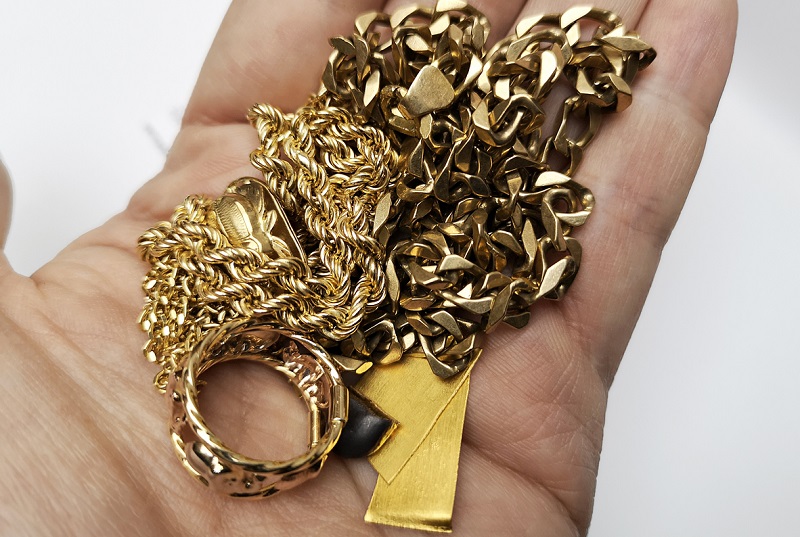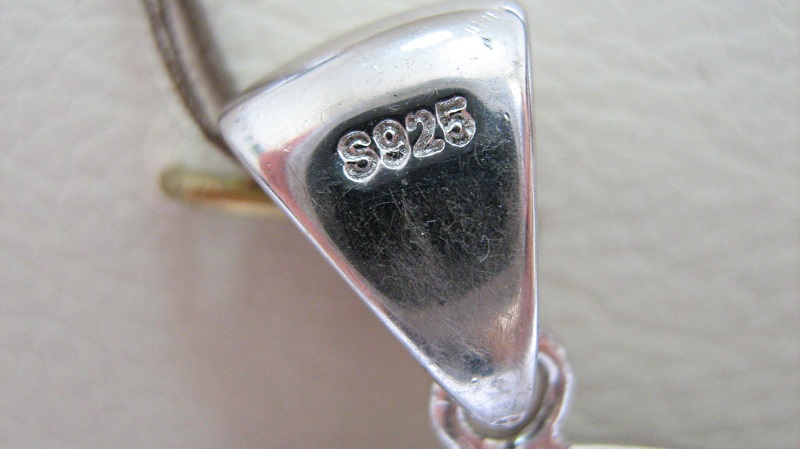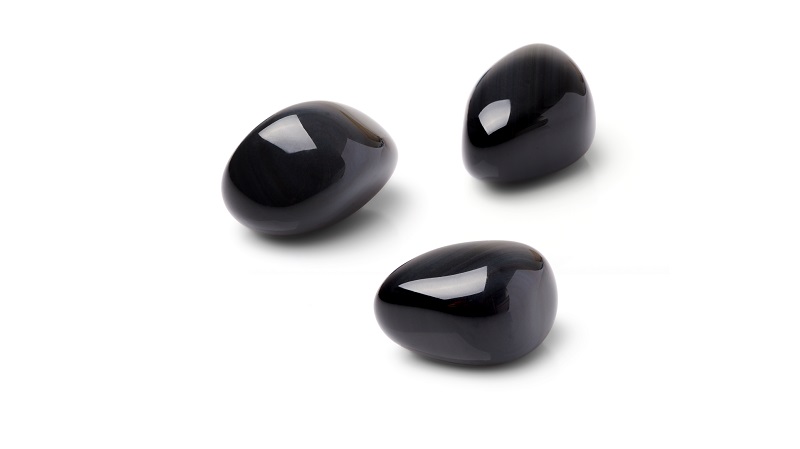You may have seen a little number marked on any gold jewelry you own.
The majority of people think that these numbers refer to the jeweler or batch, but they imply something else.
Professional gold buyers understand exactly what these figures signify and use this knowledge to calculate the price they will offer you for any item you are trying to sell them.
Here is a brief explanation of these typical gold marks.
750 Mark On Jewelry
Several items of gold jewelry contain a tiny stamp hidden somewhere, but what does 750 mean on a ring?
The stamp for a ring could be located inside the ring. A hallmark is a name for this stamp.
The hallmark reveals the karat, or degree of purity, of the gold. It is 18-karat gold if the hallmark contains the number 750.
As 24-karat gold is thought to be almost pure, you would divide that figure by 24 to get the proportion of gold in the lower karat.
If a piece of jewelry is 18-carat gold, it contains 75% gold and 25% another metal.
The jewelry’s gold content is indicated by the number 750. This number so serves as another way to refer to 18-karat gold.
A piece of gold that is 10 or 14 karats thick would have a hallmark of 417 or 416, and vice versa.
Therefore, 10-karat gold is either 41.7% or 41.6% gold, and 14-karat gold is either 58.3% or 58.5% gold.
What Does 750 Mean On Gold?

We refer to gold as pure gold if it is entirely composed of gold and has not been alloyed with any other metal.
The less pure the gold product is, the higher the number of other metals in the alloy.
The proportion of pure metal in an alloy to the total weight of the alloy is known as gold’s purity or finesse.
The most common unit of measurement for gold purity is the karat.
The name “karat” comes from the Latin word “carratus,” which also refers to the carob tree’s fruit.
In medieval Arab civilization, these fruits served as a form of payment.
The karate shows how much of the alloy is pure gold. It uses a 24-fracture system to function.
This means that 24 karat gold is made up of 24 percent gold out of the 24 constituent parts of the alloy.
In light of this, 24-carat gold is composed completely of pure gold.
When the percentage of other metals rises, an alloy’s karatage falls.
In the instance of 18-karat gold, there are 18 parts of gold in the alloy, while the other six parts are made up of other metals. Of this, 75% is pure gold.
With a purity level of 50%, 14-karat gold is made up of an alloy of 14 parts gold and 14% other metals.
Moreover, additional well-known gold alloys made from 12, 10, and 8 are employed.
Items are engraved with an official mark, or hallmark, to confirm the amount of gold or other noble metals in an alloy.
These are often punched into the metal, while more recent methods make use of 2D and 3D printers. From place to country, hallmarks differ.
Golden jewelry is stamped with karatage and has markings like 18K, 14K, ect. in the United States.
As the word “carat” is spelled that way in the United Kingdom, jewelry will be marked with symbols like “18c,” “14c,” etc.
The millesimal finessing method is used in the remainder of Europe.
This implies that we utilize a 1000 fraction, or millesimal system, rather than a 24 karat fraction system like the US or the United Kingdom.
You can find out from this how many grams of pure metal there are in a kilogram of alloy.
For instance: On a millesimal scale, 1000 permilles is equivalent to 24 karat gold, or 100% gold.
Because of this, 24 karat gold manufactured in the European Union will have the hallmark 1000.
On the millesimal fineness scale, 22 karat gold, or 91,6% gold, equals 916.
750 is the EU hallmark for 18-carat gold, or 75% gold. Together with the numbers 585 or 14, this is the hallmark most frequently seen on jewelry.
With 10-karat gold, the millesimal marking is 417, and for 8-karat gold, 333.
History Of The Gold

With the chemical symbol Au, gold is a constituent element. The term “au” derives from the Latin aurum, which means “gold.”
Alluvial deposits and rocks can contain nuggets or grains of gold, which can be discovered in nature.
Gold is a brilliant, dazzling element with a yellow color and a little reddish undertone in its native state.
As a result of its softness, it can be molded the easiest of any metal.
It is a somewhat uncommon precious metal that is frequently employed in coins, money, and fine art.
It is the oldest metal that has been used, dating back to the Paleolithic epoch, which lasted for about 40.000 years.
It has been used often and widely over the last 6,000 years.
China, Australia, and Russia are now the world’s major gold producers, whereas India is the greatest gold consumer, followed by China, the United States, and Turkey.
Gold is used for a wide variety of things, from tools and swords throughout history to everyday items in current technology.
It is one of the most popular precious metals used to produce jewelry because of its strength, high melting point, and stunning brilliance.
Yet, because pure gold is brittle and readily broken, it is combined with other metals to form an alloy.
This changes the gold’s ductility, color, and hardness, which makes it simpler to deal with while creating jewelry.
Base metals, most frequently copper, are the metals used to combine gold into alloys. Silver and palladium are two more metals that are frequently utilized in alloys.
The latter two produce white gold alloys, whereas copper-based alloys are often yellow or somewhat reddish.
How Much It Worth?
You may use the search term “pawn shops near me” to find out how much you can receive for your gold jewelry or whether the piece you have your eye on is worthwhile.
Yet because you no longer possess a beginner-level understanding of gold, you now possess the majority of the knowledge required to estimate the cost of the gold in your favorite necklace on your own.
We utilize a tool known as the “gold calculator” to estimate how much gold is contained in a given object.
The weight, purity, and market rate of gold per troy ounce is the details you need to know before determining the worth of a golden item of jewelry.
Three actions must be taken in order to determine the price: The weight of the gold alloy must first be converted into troy ounces by multiplying it by the readily available online troy alloy conversion factor.
After that, you multiply the alloy’s weight in troy ounces by the percentage of gold purity to get the weight of pure gold.
Hence, if your jewelry item is labeled with the number 750, it is made of 75% pure gold.
After that, divide the outcome by 100. In the third stage, you multiply the weight of the gold metal by the going rate for gold metal per gram to get the value of the gold metal included in the alloy.
The cost can be easily obtained online, but it’s important to stay current because it might change significantly from day to day.
Quantification of Pure Gold
We are all aware that the purity of the gold is determined by the numbers engraved on its surface. When you buy jewelry, you must see this important information.
People are constantly searching for the highest quality gold when it comes to jewelry, which is why Jacqueline Pinto makes each piece of jewelry to order using the right gold purity for the customer’s needs.
The 24-carat kind of gold is the purest. Several people refer to it as 24k gold. The finest quality is if 24 karats is inscribed on it.
You must comprehend one thing in this case. Even if you purchase 24-karat gold, it is not entirely pure. That is 99.9999 percent pure, as far as we know.
Jewelry cannot be made of 100% pure gold. It becomes overly soft and is therefore unusable for jewelry or decorations.
You should also be aware of how we arrived at the number. We’ll examine the gold measurement process for it.
How Should You Measure Gold?

Divide the amount of gold by 24 for the simplest measurement. At that point, the gold’s true purity becomes apparent.
If we split the 18k gold by 24, for instance, we get 750. It represents the purity measurement.
The gold is 750 pure in this instance, we may state. The 750 mark on the gold is there for this reason.
Similarly, there are 585. When we split 14 karat gold by 24, we get 584, then a string of 3.
Often, 585 is used to round the number. The figure rounds to 583 in several nations. This is the reason the mark of 583 is present.
All of this was about the origin of the mark on the gold. All the other markings that you often notice on jewelry will now be visible to us.
Additional Gold Marks
There are several other markings placed on gold. Let’s learn each one individually.
Most of you probably understand this math. But if you don’t want to take the effort to do it yourself, you may just check this too.
In this case, if we divide 8 karat gold by 24, we obtain 333, followed by an endless number of 3.
Hence, it is regarded as 333 gold. You’ll see the number 333 written above it.
- 3 carats of gold, or 333. The end result is 333.333.
- 375 is 9 Karat gold. This is often located in the UK.
- 417 is 10 karat gold. Remember, 417 is the rounded result here. Occasionally, individuals think frequently think about 417. The minimal amount of gold sold in the USA is typically 10 karats. As a result, you ought to aim for 417 or higher.
- 585 or 583 is 14-carat gold.
- 750 is18 carat gold.
- 916 is 22-karat gold. It’s frequently written as 917 here. As 22k gold is regarded to be too soft for jewelry made of pure gold, it is generally alloyed with other metals. It is therefore commonly employed for plating as well as the production of gold leaf.
- 999 purity 24-carat gold.
USA Hallmarking
The individual who applies the marks will now be better understood, as well as the variations in their methods.
In the US, there is no set official procedure for hallmarking.
Instead, a number of organizations are responsible for the hallmarking.
The agencies vary depending on whatever county you are in.
They receive the mark from the Federal Trade Commission (FTC).
Hence, let’s examine the common FTC-approved jewelry marks that you could come across.
Typical Marks on Jewelry
We’ll study some of the most typical jewelry marks in the US right now. We’ll also be able to examine their purity level as a percentage.
There are a few highly popular marks, although not all of the aforementioned marks are offered in American jewelry retailers. The list is shown below.
- 10 karats of gold. The least sought-after gold item is this one. Just 41.7% of it is gold. Other metals make up the remainder of them. We may thus state that it is 41.7% pure.
- Use 14-karat gold, which has about 58.5% gold content, if you wish to go beyond 50%. This is the one you should choose if you want to go on a budget.
- Purity 75% is the following level. The 750 marks are visible here, as you would have predicted. It is 18-karat gold.
- Rich gold is used for the last one. The gold content is 99.99%, and it is 24-karat gold.
Jewelry Hallmarks

Jewelry hallmarks, which function much like fingerprints to identify a piece of jewelry, aid.
While they might not appear significant at first, they can provide a lot of knowledge about your prized ornaments.
Each jewelry enthusiast must be able to recognize them, so let’s get started.
If you want to see jewelry logos clearly, you might need to use a magnifying lens because they are sometimes quite small.
The majority of jewelry trademarks can take many different shapes and are often found on the inside or back of a piece of jewelry.
The arrangement of the marks may change depending on the nation of origin.
The three markings or any jewelry marks not mentioned here may not be present on all pieces of jewelry.
A mark that is imprinted on jewelry to denote purity or authenticity is known as a hallmark.
The most popular metals used in jewelry are gold, silver, and platinum.
There are specific purity requirements for each metal, which are measured in karats (for gold), for silver is fineness and for platinum-parts per thousand.
For instance, a 14-karat gold ring has 14 parts gold and 10 parts other metals, but a 24-karat gold ring is made entirely of gold.
Moreover, hallmarks might reveal the creator, the item’s date and location of manufacture.
It’s critical to understand the significance of the various hallmarks while purchasing jewelry. The following are some of the most typical jewelry hallmarks:
- Gold’s purity is indicated by the karat (KT or K) designation; the greater the karat number, the purer the gold.
- A piece of at least 99.9% pure silver, according to the Fine Silver (FS) designation.
- A item is at least 92.5% pure silver when it is marked as sterling silver (SS).
- A piece is at least 95% pure platinum, according to the designation platinum (PT).
- A base metal is coated with at least 10 karats of gold to create a gold-filled (GF) surface.
- Gold-plated (GP) refers to a base metal that has a thin coating of gold on it.
- A object has been formally hallmarked when the symbol “Hallmark” (HL) is present.
- The creator of the item is identified by the Maker’s Mark (MM).
- The assay office mark (AO) identifies the location of the assay (tested for purity).
- The year the item was created is indicated by the Date Letter (DL).
- Country of Origin Mark (COO): This mark identifies the origin nation.
While purchasing jewelry, it’s crucial to search for hallmarks that reveal the metal’s purity and the creator.
Having a piece of jewelry with one of these markings will let you know that it is high-quality and will survive for many years.
Often, the jewelry manufacturer’s mark consists of a mix of letters, numerals, and/or both that uniquely identify the jewelry maker.
A jewelry maker’s mark can be any combination of letters, numerals, and/or symbols, usually between two and six characters.
Usually, the manufacturer’s name, initials, or another distinctive representative symbol are stamped on these products.
Conclusion
Jewelers use marks on jewelry to describe the caliber of the goods they are selling.
You may choose the appropriate hardness and color of your jewelry item with more knowledge if you are aware of what various numbers, characters, and symbols imply.
You have it, then. You have all the information you require to determine the purity and value of your jewelry thanks to the 750 mark on it.
When buying gold jewelry, it’s critical to comprehend these indications because they may have an impact on the item’s longevity and worth.
So, when buying gold jewelry labeled “750,” it is wise to speak with a trusted jeweler to make sure you are obtaining the quality and value you want.
Don’t miss these topics:
- Can You Shower With Sterling Silver?
- Blue Beads – Spiritual Meaning and Symbolism
- Can You Use Shower Gel As Hand Soap?



